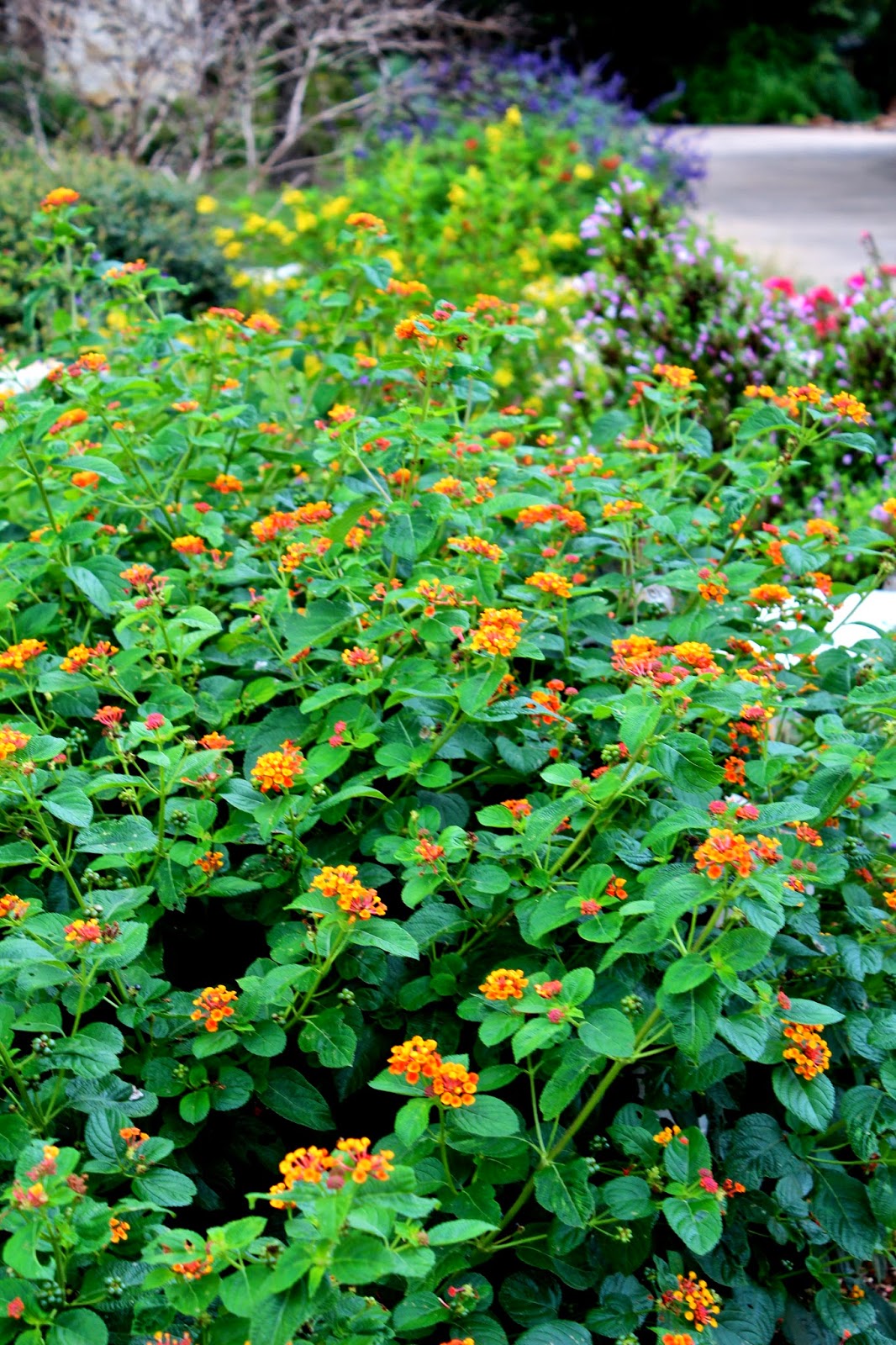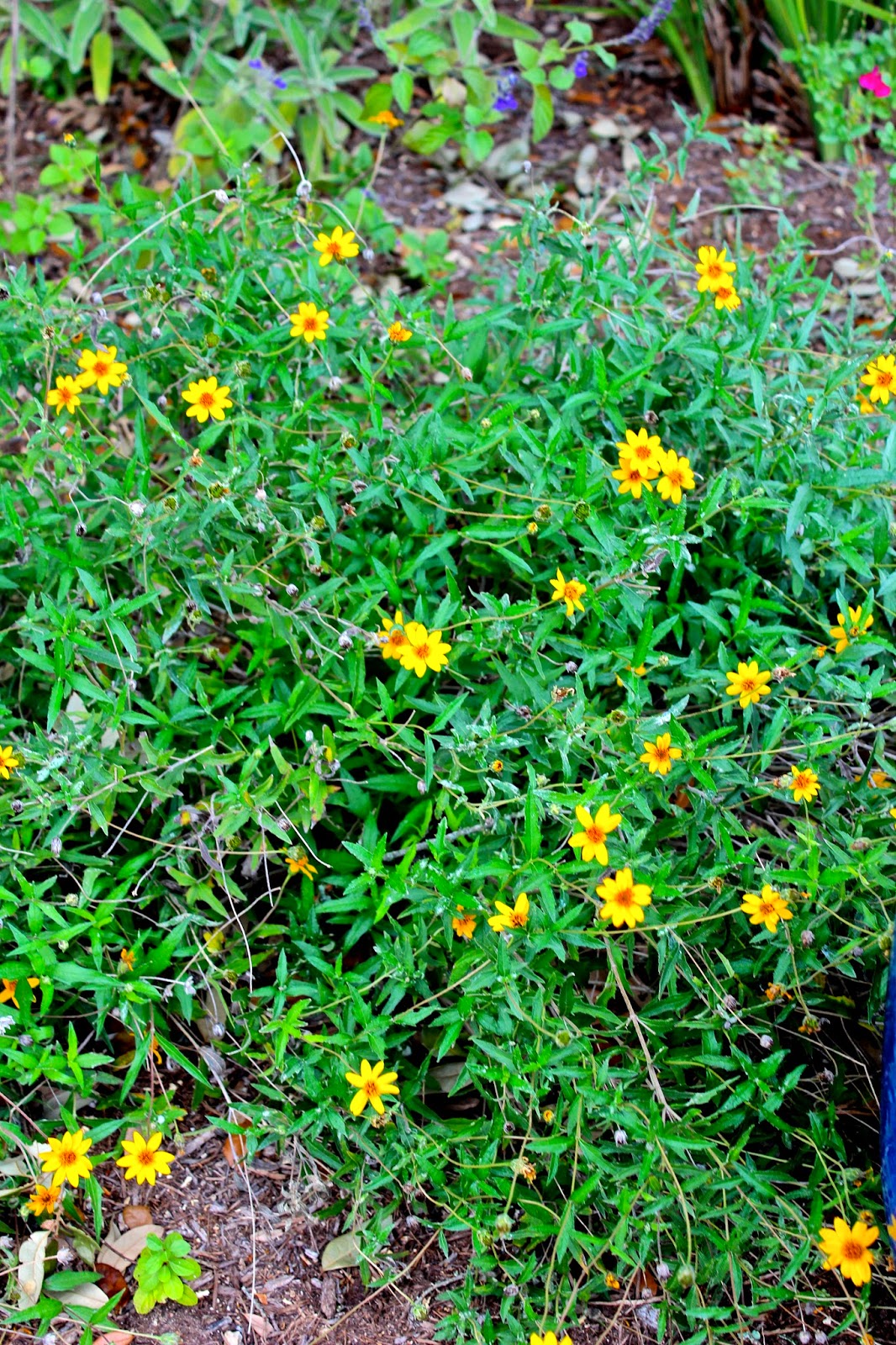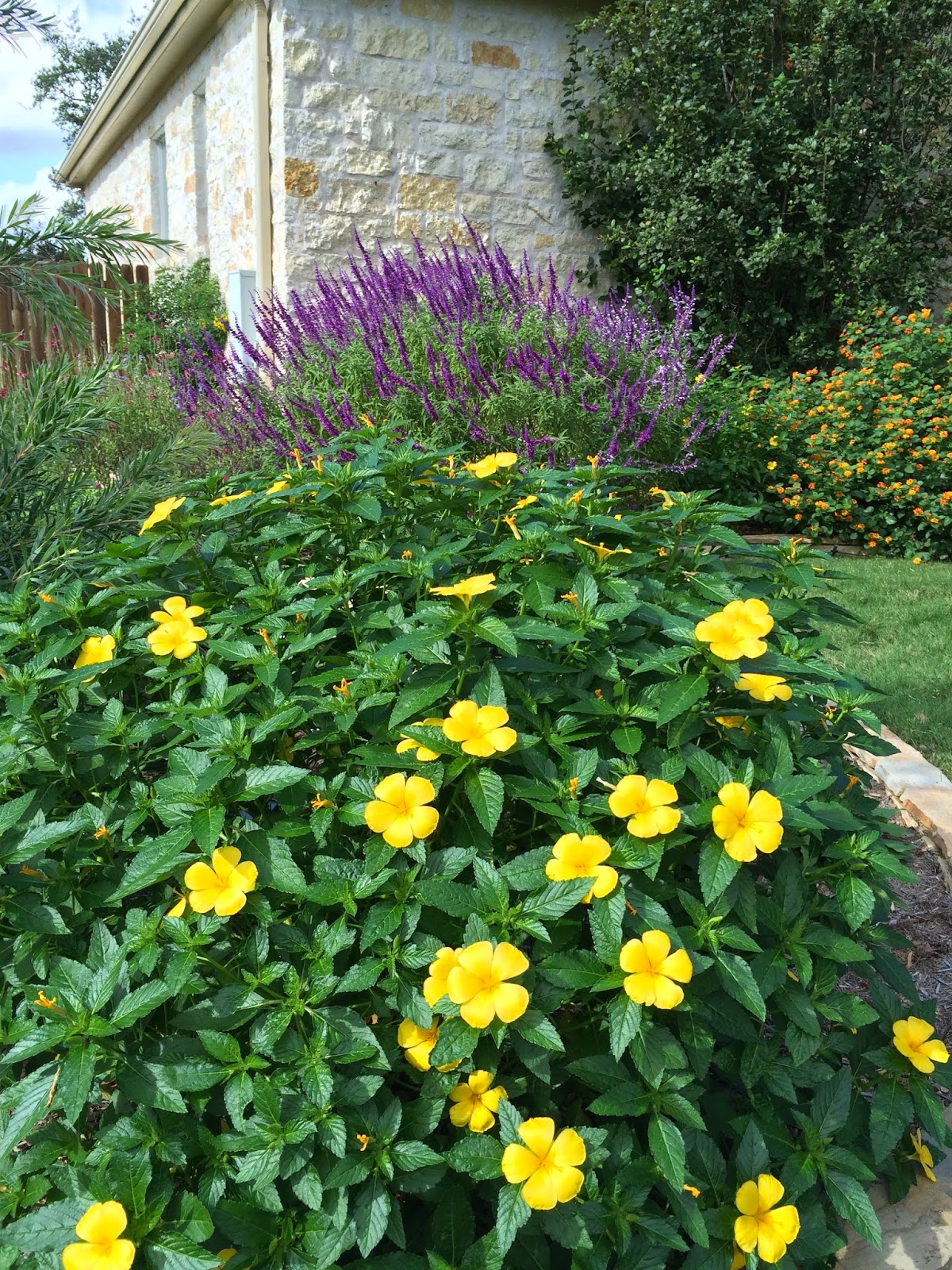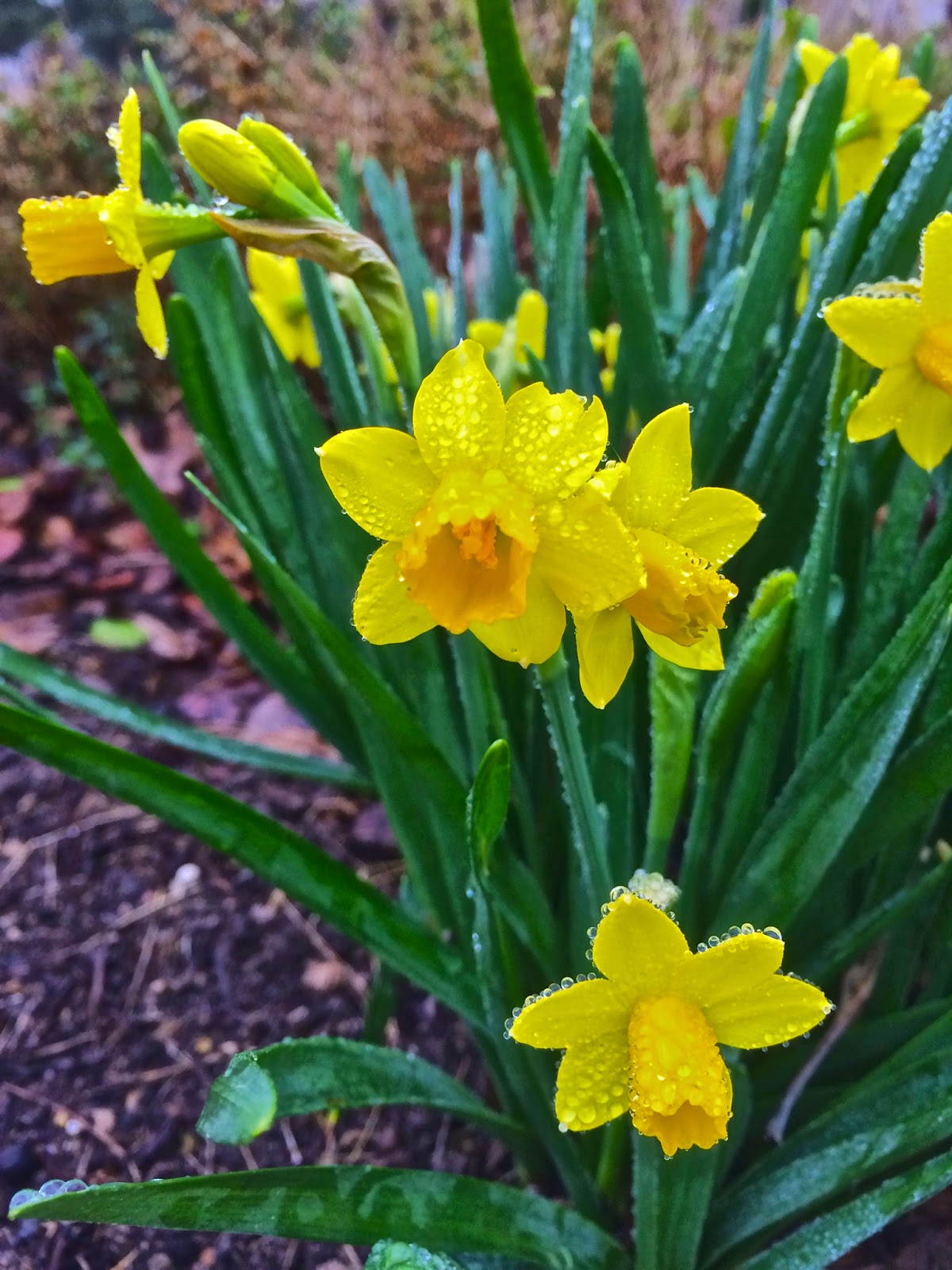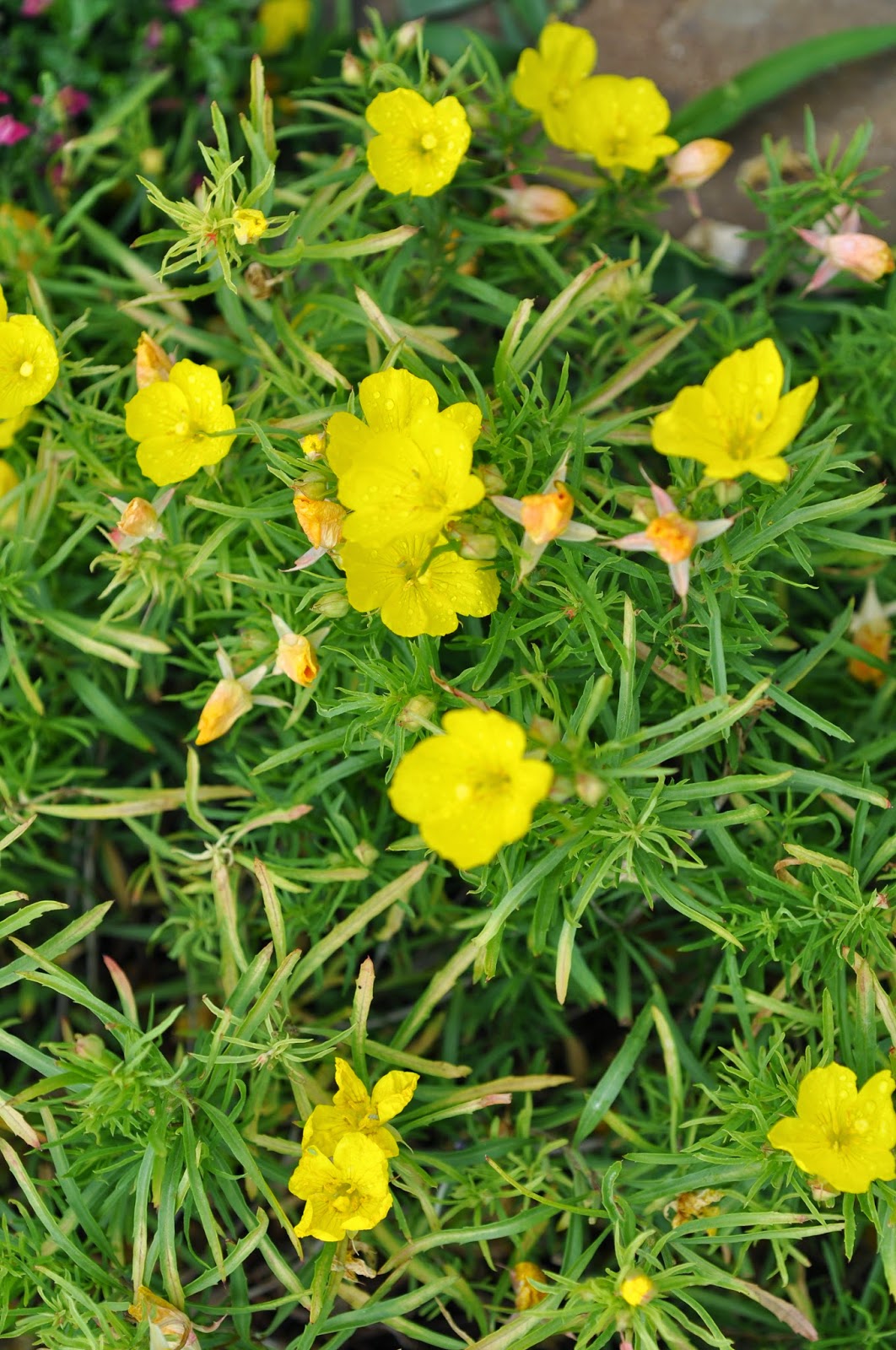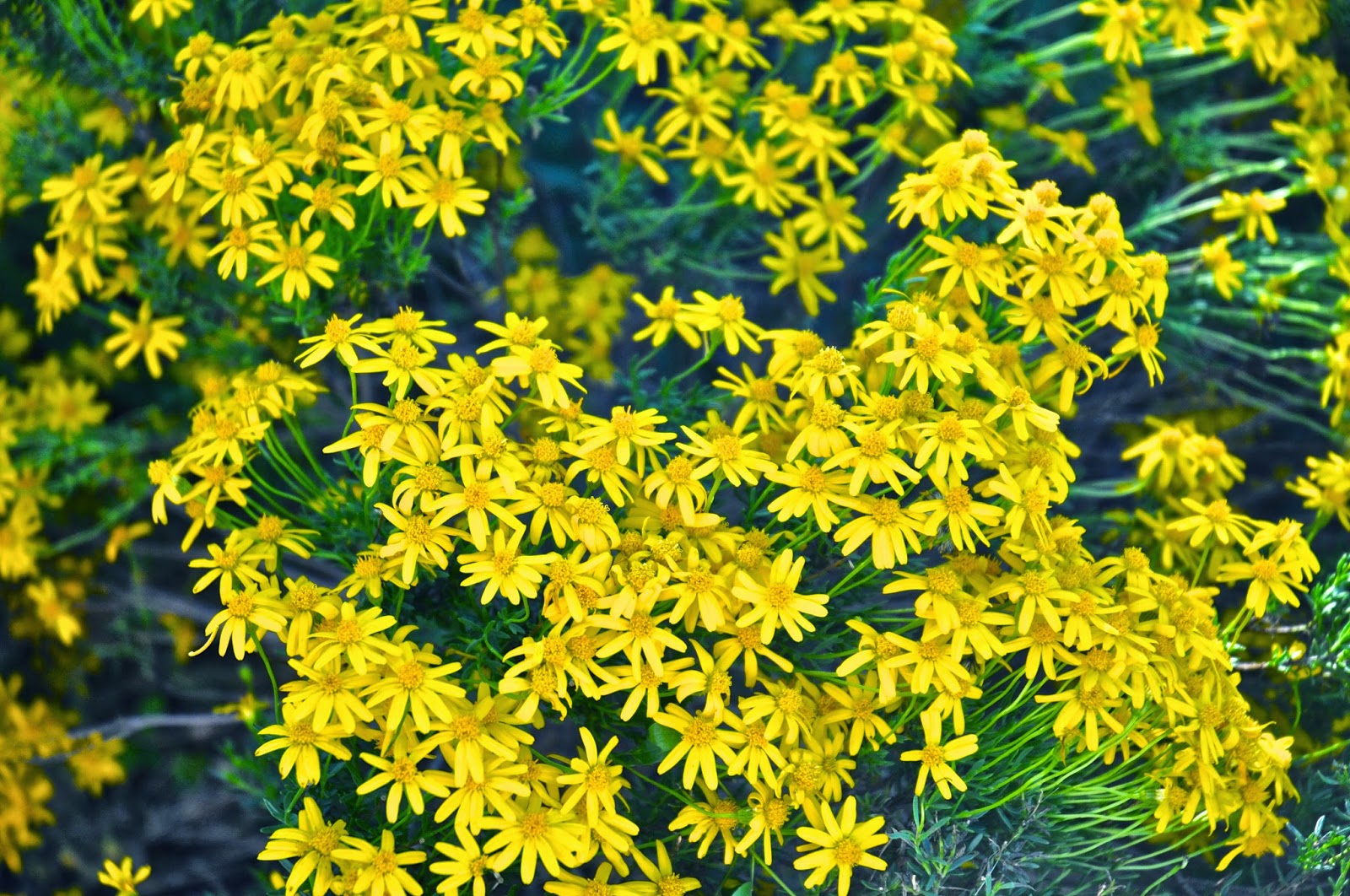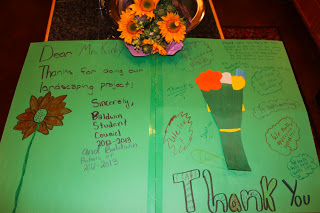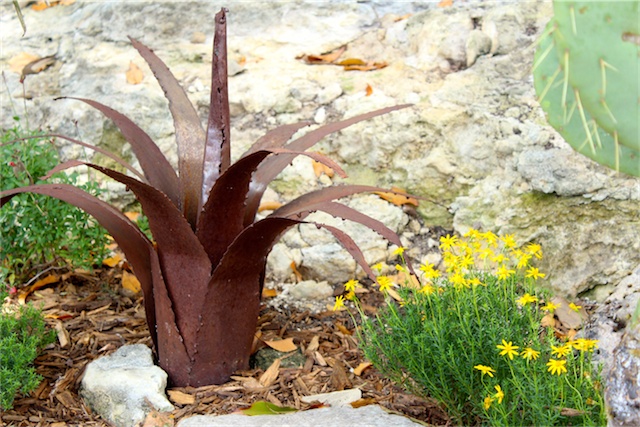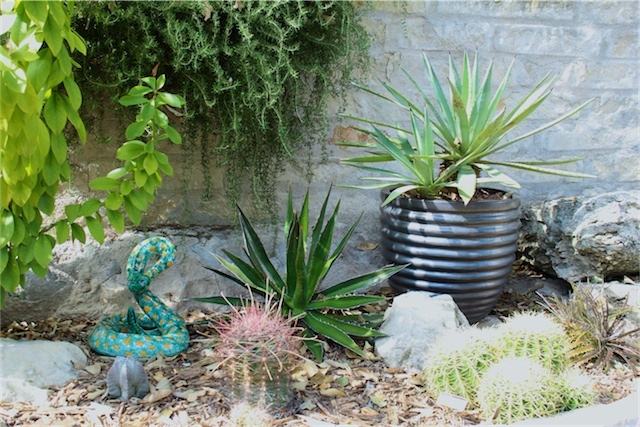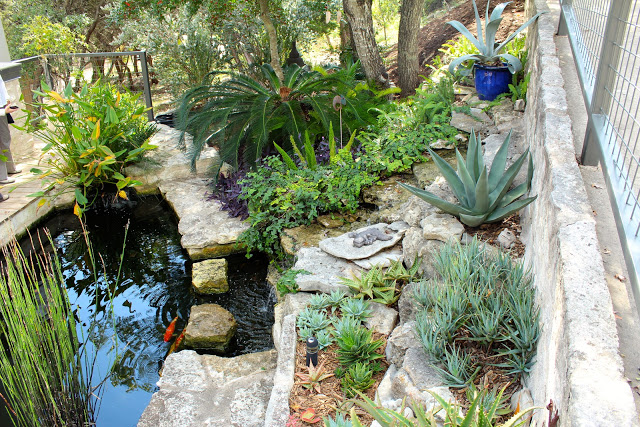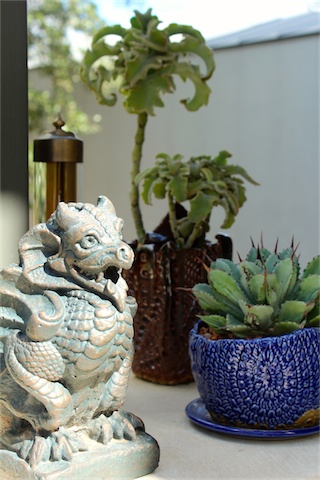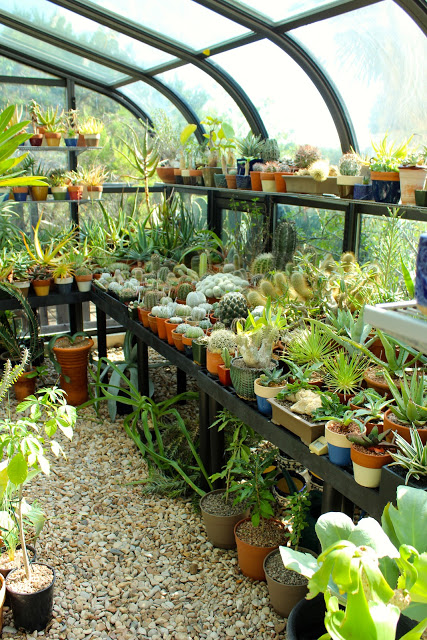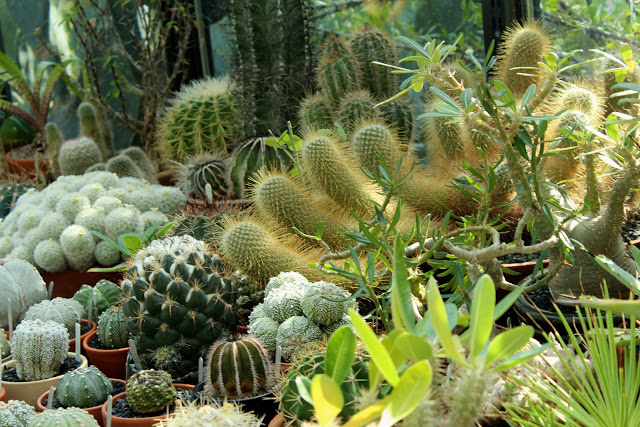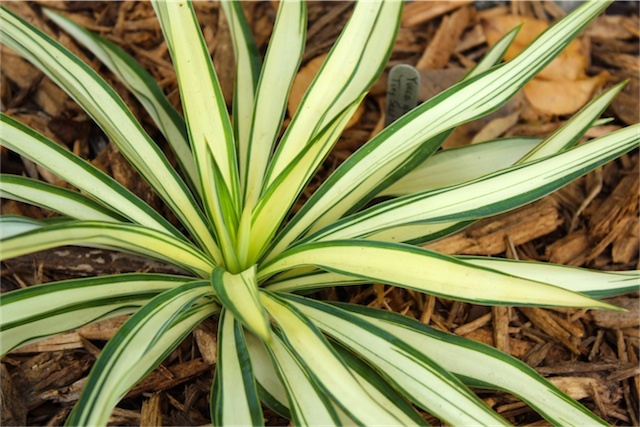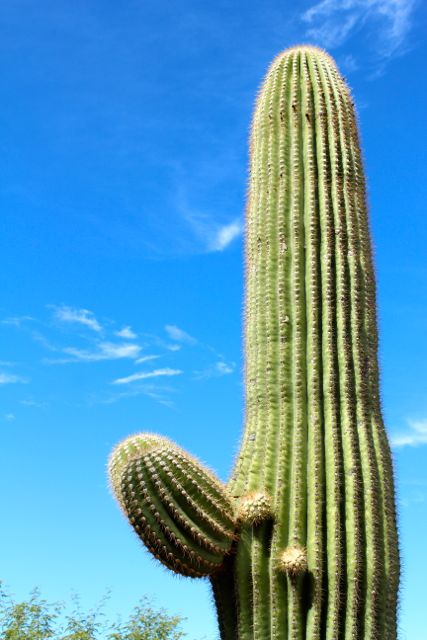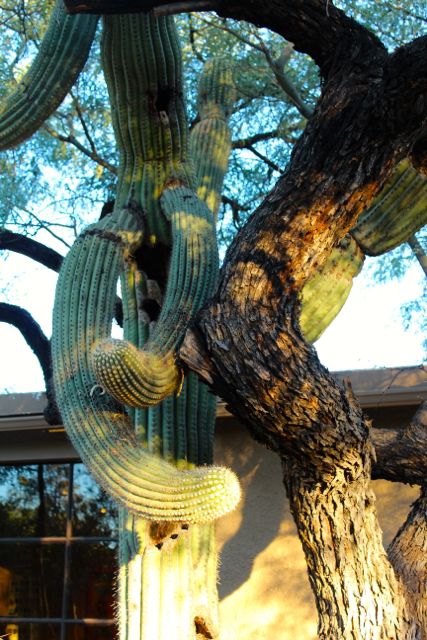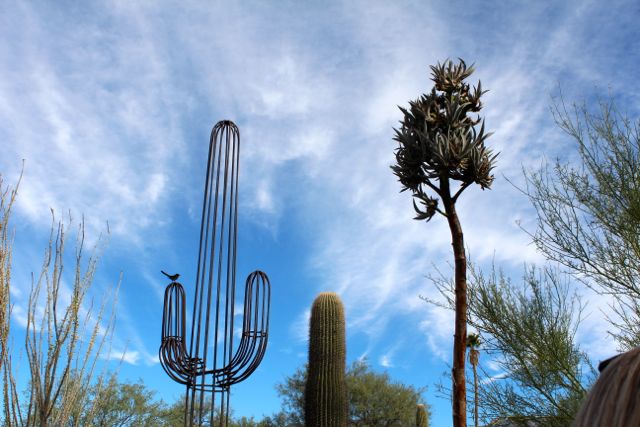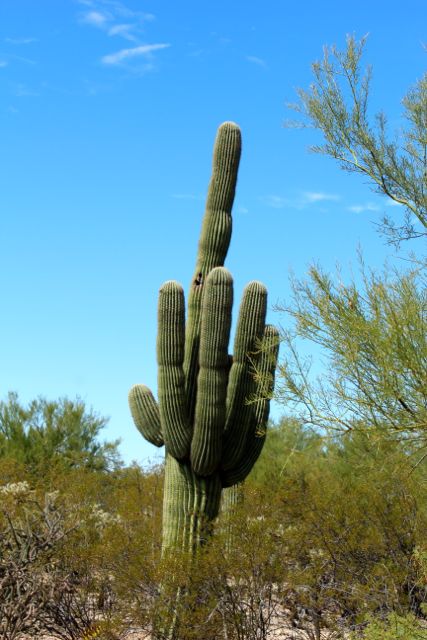Mellow and not so mellow yellow in my garden….
If you asked me about my favorite colors in the garden, I’d say: purple, lavender, blue, orange, yellow…and trail off about then. I posted this a few months ago and forgot about it — here are the names of all the yellow fellows in my garden:
Thryallis
Lantana Horrida
Lantana New Gold
Zexmenia
Lantana confetti
Cuban buttercup
Candlestick tree
Jerusalem sage
St. John’s wort
Bright edge yucca
Santolina
Daffodils
Calylophus
Damianita
Esperanza
Lemon Mallow
Iris
Hymenoxis
Gopher plant
I wouldn’t even put yellow in my top 3. And yet, as I look around my garden, it’s yellow that I see everywhere. It’s a major element in many of my beds, but it’s gotten there without serious thought to including it.
Let’s face it, there are many plants with yellow blooms that love our hot sun and dry days. So it’s always easy to find something yellow to add to a vignette.
And as I count the yellow bloomers in my landscape, I smile. Yellow makes me happy. That must be why I am surrounded by it. Subliminal intention.
As I was writing this post, I began typing the plant names, and then thought – why now make a contest out of it? Let’s see how many of these perky plants you can ID! I’ll edit the post when the guessing is done and post all the names.
Ready, set, go!
No lack of gardening chores, even in winter weather…
We’ve had some uncharacteristically cold days and nights in Central Texas this year. Winter arrived early and didn’t let up.
I’ll admit, I do enjoy a little garden break. But the garden still beckons me when the sun comes out and the weather warms just a little.
As I look out, I see:
- shrubs and perennials I’d like to prune,
(don’t those look terrible?)
- weeds that are taunting me by growing right through the cold,
- leaves calling my name (even though I will leave them there to protect plants),
- the see-sawing back and forth of deciding whether or not to do some larger projects while things are dormant,
- and piles of empty pots, unattended seed packets and a few dead plants in the garage – breaking the rules of everything having a place in the new cabinets.
But I also see:
- bulbs peeking up out of the mulch, growing just as they should, working hard to be ready for spring,
- winter-loving plants like the hellebores and quince getting ready to bloom,
- and the blue bonnet foliage growing and spreading.
I know what comes next, do you? The rationalizing…
I think … oh, I still have plenty of time go take care of those chores … oh, it’s still pretty cold out – I don’t really want to be out there yet … oh, I should be doing indoor organizing chores …
You know the drill, I know you do. Don’t those things go through your head as well?
Ah, the peace of winter and the promise of spring. (And just a little smidge of the guilt of gardening!)
Kids love beautiful gardens, too…
I just came from morning assembly at Kallie’s elementary school where they honored me for designing their front garden — donating all the plants and creating the bed at cost. It was so special – they gave me this GIANT card and beautiful sunflowers and are putting up a sign recognizing the work.
We planted tough, xeric plants in the school colors – gold and purple — lantana, damianita, Indigo spires, grasses, blackfoot daisies and a lovely tree.
I love working with such a great school.
Agave afficionado’s garden delights on tour…
Today I joined my garden blogging friends Pam Penick, of Digging, Cat Jones, of The Whimsical Gardener, Jeanne McWeeney of Dig, Grow, Compost, Blog, and Shirley Fox of Rock, Oak, Deer, for the Garden Conservancy’s Open Days tour.
It was a great morning – a little foggy early on, but very comfortable for garden gawking. We toured six wonderful Austin gardens — all of them true gardener’s gardens — full of creative and personal touches. I met most of the gardeners and hosts and enjoyed hearing about the evolution of the gardens.
Carved into rocky ledges, Jeff Pavlat’s garden was a southwest/agave afficionado’s dream come true. Every imaginable combination of agave, aloe, yucca and cactus bedazzled us.
With our changing climate here in Central Texas, these plants are proving to be great additions to gardens that are in as much transition as the weather.
Layers of limestone steps and retaining walls combined with the natural escarpment to lead visitors down the slopes. Artistic touches complemented many of the vignettes and combinations.
There were even agaves where there were no agaves.
Some of the focal points were whimsical, and others were inspirational.
Pots were also used to add height and interest to plant combinations.
Looking down into a stream and koi pond, the sound of water beckons you for a closer look.
The welcome committee was still hanging around from Wednesday night’s festivities.
Many of the small specimens were scattered about in beautiful, textured pottery.
And, above all else, his is a collector’s garden. Plants fill every inch of the greenhouse. I have no idea where the big pots will go in the winter!
A few critters were keeping an eye on us as we wandered through the garden.
This one was easily the creepiest.
There were several varieties I vowed to find and add to my garden, especially this yucca gloriosa “tiny star.”
I thoroughly enjoyed this drought-tolerant and creative garden with all of its texture, stone and sculptural plants.
Sonoran’s saguaro cactus is a gem of the desert…
Amazing, isn’t it?
This is the saguaro cactus, Carnegiea gigantea, one of the most spectacular sights on my trip last week to the Garden Writers Annual Symposium in Tucson, Arizona.
The saguaro only grows in the Sonoran Desert, and it doesn’t do that very fast. Saguaros only grow between 1 to 1-1/2 inches in their first 8 years, according to information published by the Saguaro National Park.
Our highly entertaining breakfast speaker, Peter Gierlach, former nurseryman, country singer and radio show host of “Growing Native with Petey Mesquitey,” told us that saguaro can be as old as 75 years old before they grow their first branch. In drier areas, it can take up to 100 years to grow a branch.
Saguaras begin to bloom at about 35 and can live to be 175 to 200 years old. They can get 50 feet tall and weigh as much as 6 tons. (As my husband said to me, “you wouldn’t want that to fall on you!”)
According to the Saguaro National Park, “The roots of the saguaro grow in a radial fashion, several inches under the ground. During a heavy rain, a saguaro will absorb as much water as its root system allows. To accomodate this potentially large influx of water, the pleats (of the saguaro) expand like an accordion. Conversely, when the desert is dry, the saguaro uses its stored water and the pleats contract.”
Sometimes they grow in strange shapes, like this one intimately entwined with a tree at the Tucson Botanical Gardens.
This unique and creative metal art pays homage to the saguaro and its stature in the desert.
Wonder how old this guy is? I thought these statuesque cacti were phenomenal when I arrived in Tucson. When I learned their amazing history and story, I was even more impressed.
I am in awe of the will and ability of plants to adapt and grow in the harshest of conditions and against all odds.
I suppose that’s why I garden…I appreciate the gift of being able to be a part of something so much greater than me.


